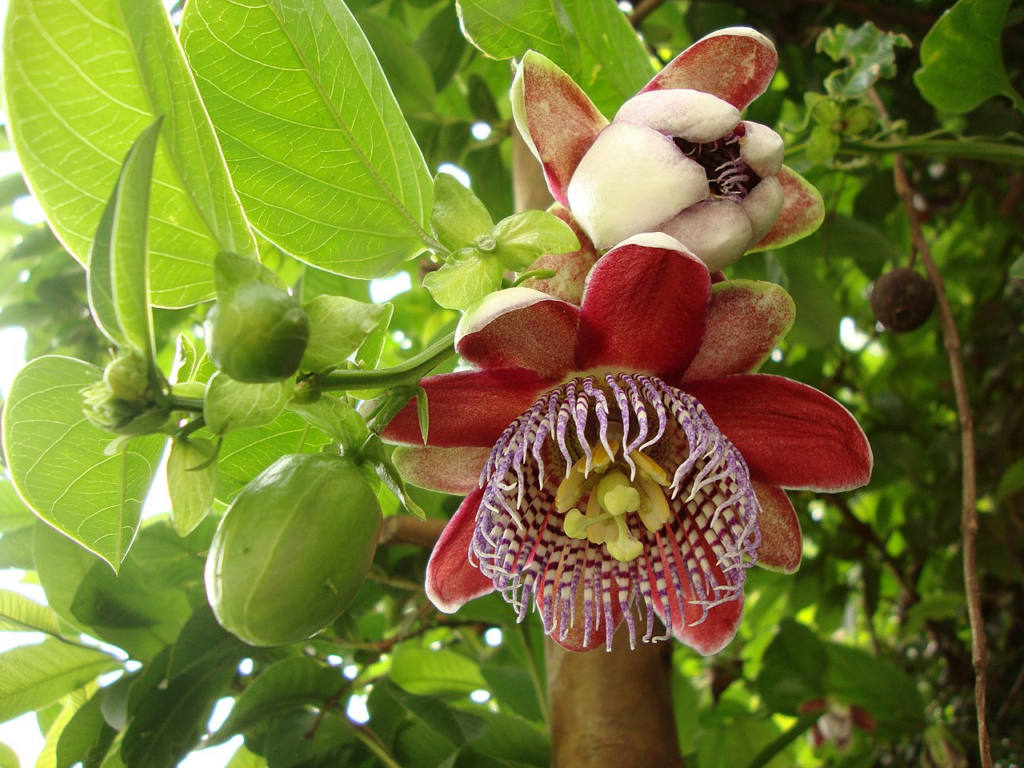Passiflora alata, commonly known as the winged-stem passion flower, is a remarkable flowering plant native to the Amazon region, ranging from Peru to eastern Brazil. This evergreen vine can grow up to 6 meters (20 feet) or more, boasting an enchanting display of flowers and bearing delectable edible passion fruit.
The local people affectionately refer to this plant as “ouvaca,” which translates to “red star,” owing to the striking appearance of its flower. Other names like fragrant grenadilla and maracuja de refresco are also used to describe this captivating species. The specific epithet “alata” aptly denotes “winged,” a reference to the distinct four-winged stems that add to its allure.

The leaves of Passiflora alata are either oval or oblong, measuring 10–15 cm (4–6 inches) in length and 1–10 cm (0–4 inches) in width. The fragrant flowers are 7–10 cm (3–4 inches) wide, adorned with captivating red curved tepals and a prominent fringed corona featuring bands of purple and white, creating a mesmerizing striped appearance. These alluring blooms usually grace the plant in late summer or early fall, thriving under full sun exposure and attracting the attention of bees, butterflies, and birds.

Beyond its aesthetic appeal, the solitary fruit of Passiflora alata holds immense value to the local communities. Shaped like an egg and colored in shades of yellow to bright orange, the fruit measures 8–15 cm (3–6 inches) in length and 5–10 cm (2–4 inches) in diameter, weighing between 90–300 g (3–11 oz). Its exquisite taste and nutritional benefits make it a prized delicacy in the region.

In temperate climates, Passiflora alata is often cultivated indoors, although it can also flourish outdoors as long as the temperature remains above 5°C (41°F). Its outstanding attributes have earned it the prestigious Royal Horticultural Society’s Award of Garden Merit, a testament to its desirability among gardeners and horticulturists.
Additionally, the plant holds significant medicinal importance in Brazil, being officially recognized as a phytomedicine and listed in the first edition of the Brazilian Pharmacopoeia in 1929. With a long-standing reputation in traditional South American folk medicine, Passiflora alata’s therapeutic potential is highly regarded, yet its pharmacological composition remains an area of limited understanding, warranting further scientific investigation.

In conclusion, Passiflora alata, the winged-stem passion flower, stands as a botanical wonder from the Amazon, captivating with its vibrant flowers, delightful fruits, and potential healing properties that continue to intrigue researchers and herbal practitioners alike.

